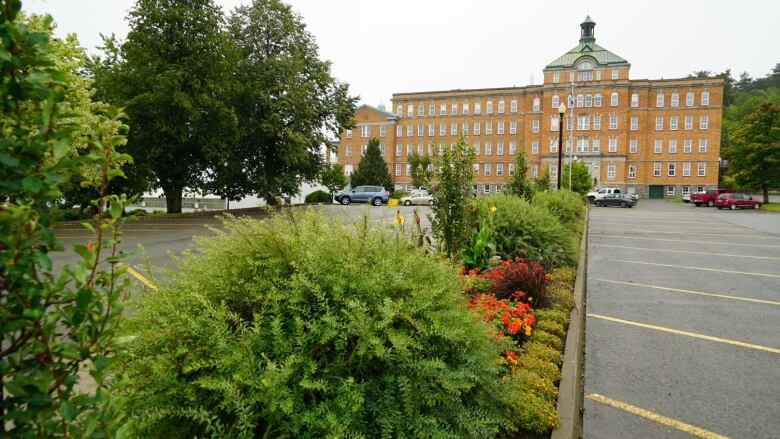Quebec's first COVID-19 wave battered Montreal. Now, outbreaks have come to the regions
Cases ticking sharply upward in Quebec City and several other parts of the province

The good news is public health sleuths can mostly trace the recent uptick in COVID-19 cases to specific places or events: a back-to-CEGEPparty in La Pocatire,an old-age home in Quebec City, a residential neighbourhood in Sherbrooke.
Now for the not-so-good, more ominous part:since the rate of confirmed casesin Quebec began inching upward in the last week of August, when many elementary and high schools re-opened, it's put the public health apparatusin several regionsof the province under mounting strain.
If the story of the spring was principally a tale of Montreal and environs, the autumn narrative is shaping up to be about the regions.
Experts say the situation could soon worsen.
"We're entering the critical period where there will be more and more outbreaks," Dr. Ccile Tremblay, an infectious disease specialist at the Universit deMontral, told Radio-Canada. "Not just outbreaks, but cases of people who have acquired the virus in the community."
The Capitale-Nationaleadministrative regionhas logged morecases since Saturday (220 and counting) than it did through June and July combined. Earlier this week, it reported its largest single-day increase in positive tests since the pandemic spilled into Quebec inFebruary.
"We knew for the fall season we would see an increase it's sooner than expected, for sure," Dr. Jacques Girard, the interim public health director for the Quebec City region, told Quebec A.M. this week. "Something is going on, and I think, for sure, the virus is circulating."
No one is raising the dreaded words "community spread" just yet, but there are worrying signs.
The math leaveslittle room for negotiation; as the spring showed exponential growth is real, and the fight is on to prevent larger outbreaks from taking root.
Spotlight shifts to Bas-Saint-Laurent
Last week's flashpoint was the Bar Kirouac in Quebec City. This week's isa pair of post-secondary colleges in La Pocatire: the town's CEGEP and the Institut de technologie agroalimentaire.
"We had one of the best records in Quebec, right up until this week," said Dr. Sylvain Leduc,director of public health atthe CISSSBas-Saint-Laurent. "We were considerably surprised (Wednesday) to find a dozen cases in one day."
Health officials were quickly able to pinpoint the main cause: a house party on Aug. 30 that was attended by at least 100 people, most of them students. More parties followed in the subsequent days. Now the virus has spread throughout the region and toChaudire-Appalaches, rightnext door.
"What is striking is the people coming up with positive tests are not just people who attendedone of the parties," Leduc said. "In some cases, it's people who went to none of these gatherings, but had the bad luck to know someone who had."
Thus, as with the Quebec City karaoke night cluster, there is clear evidence of secondary transmission.
"And that's what worries us," said Dr. Leduc. "It worries us because the young people who partied with each other have since visited numerous business, they work in numerous businesses and in some cases work on farms . . . the cherry on top is many of them decided to take advantage of the long weekend to go back home to see their families."
Numbers rise in the Outaouais and Eastern Townships
Case numbers are ticking upward in several other parts of the province as well; seven of Quebec's 18 regions have registered double-digit daily increases this week, although theirnumber also includes major population centres Montreal, Laval and the Montrgie.
Under the government's new colour-coded alert system, the Eastern Townships tipped into yellow (or "early warning") earlier this week, along with the Outaouais, Quebec City and Laval. The Bas-Saint-Laurentcould eventually join the group, so too could Montreal.
TheCIUSSS de l'Estrie-CHUSannounced 24 new cases on Thursday. Most werediscovered in Sherbrooke and they addto the100 logged last week inAscot, a neighbourhood on the city's south side.
When a CIUSSS spokesperson was asked if there were any indications there of community spread, she said that was a question best put to front-line public health personnel, all of whom were busy trying to keep up with alarge and growingpile of active cases, including 24 new confirmed COVID-19 tests on Thursday.
As Quebec tightens the screws on everything from public gatherings to the wearing of masks to singing and dancing in bars, public health experts are calling on the province to further bolster itstesting and contact tracing resources.
"Having a lot of screening capacity is both useful and necessary," said the Tremblay. "The 16,000 tests per day done over the summer aren't going to be sufficient for the fall."
with files from Radio-Canada and Susan Campbell












_(720p).jpg)


 OFFICIAL HD MUSIC VIDEO.jpg)
.jpg)



























































































